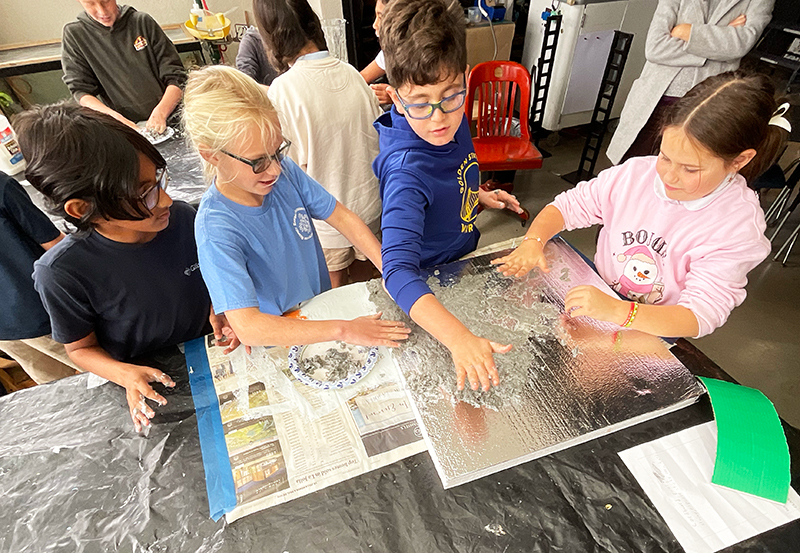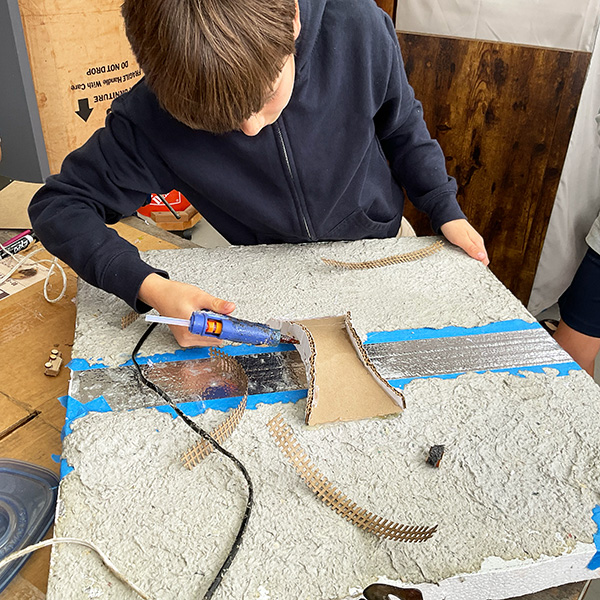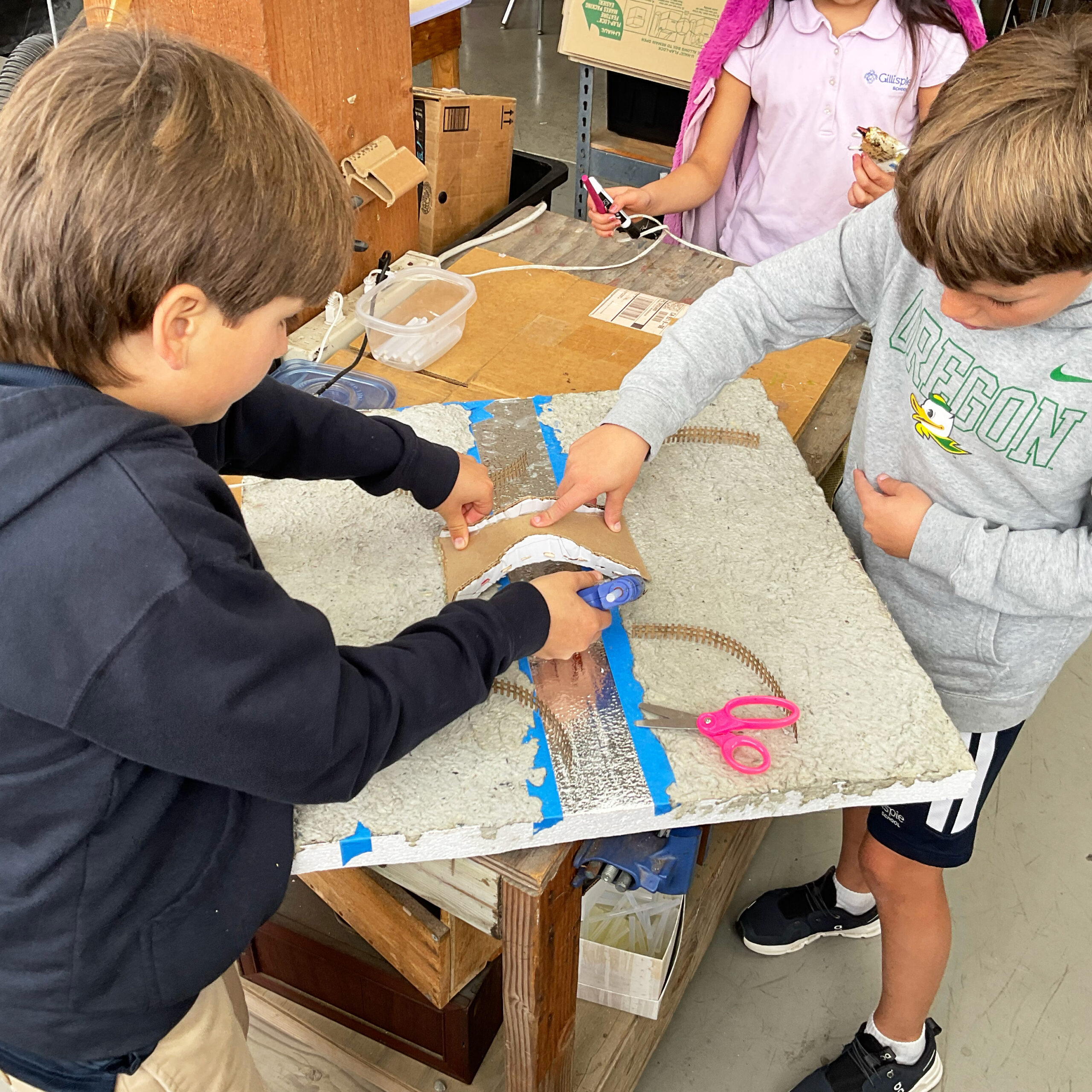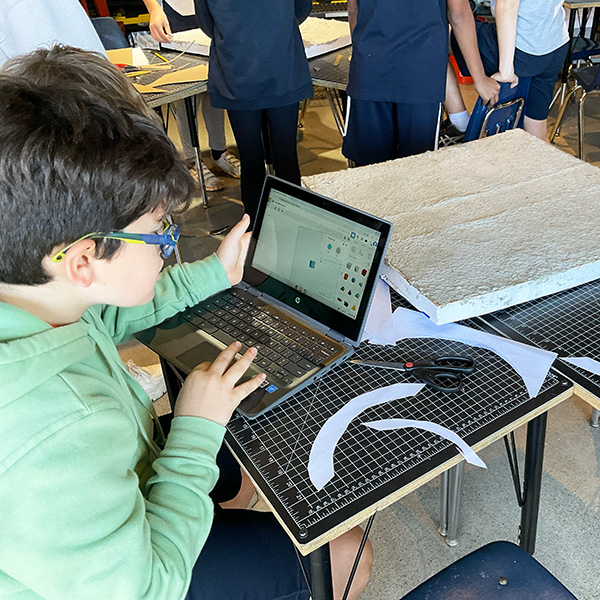




Our fourth graders are drawn to animals and the challenge of solving problems, and a major part of their social studies curriculum is studying the many aspects of their home state. We wanted to help our students harness their natural curiosity while exploring a critical issue facing California - the increasing conflict between wildlife and human development. These topics have come together in The Animal Crossing Project, an interdisciplinary design challenge that encourages students to tackle real-world environmental issues.
The project began with a discussion of A Wolf Called Wander, by Rosanne Parry, a novel about a wolf navigating human landscapes. Did Wander ever come across humans? How did he respond? Expanding the thinking a bit, we posed the general question, ‘What kind of things can happen when the wild world meets a human-built landscape?’ Eventually, the conversation led to the habitat fragmentation that occurs when busy roads cut contiguous wilderness into pieces. What are the effects on animals? Are different animals affected equally? Let’s not forget that humans are often severely affected when large animals cross the road in front of their cars. What can be done about it all?
Students learned about real-world animal crossings, analyzing how terrain and species needs influenced the designs. Working in teams based on California’s geographic regions, they researched local wildlife and determined which species were most affected by habitat fragmentation. Choosing one or two animals to focus on, the groups began to work on how they could provide safe passage across a hypothetical freeway—overpasses, underpasses, or alternative crossings—tailored to their assigned region’s ecosystem.
Over several months, students iterated on their designs, constructing scale models of their crossings with styrofoam, papier-mâché, and various materials. They incorporated fencing to guide and encourage animals toward the crossings and in Art class, painted backdrops to represent their regions. Every step required persistence—adjusting structures, refining details, and problem-solving to ensure functionality and realism.
Currently, some groups have secured their crossings to the base and applied a thin coat of papier-mâché for a seamless, natural texture. Next, they will paint the landscape and crossing, attach fencing elements, and add details like plants and rocks. Finally, each team will introduce their tiny laser-cut animals, bringing their design to life!
It has been rewarding to work alongside these passionate advocates, thinkers, and makers as they connect literature, geography, design, and ecology in a cooperative and collaborative problem-solving context. Their projects will be showcased at the Arts and Sciences Showcase in May, highlighting not only their creativity but also their perseverance in addressing real-world challenges.